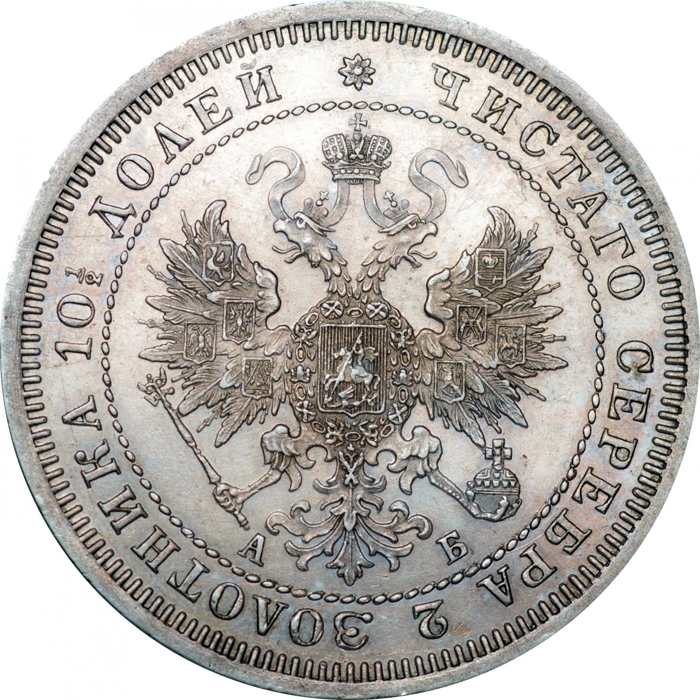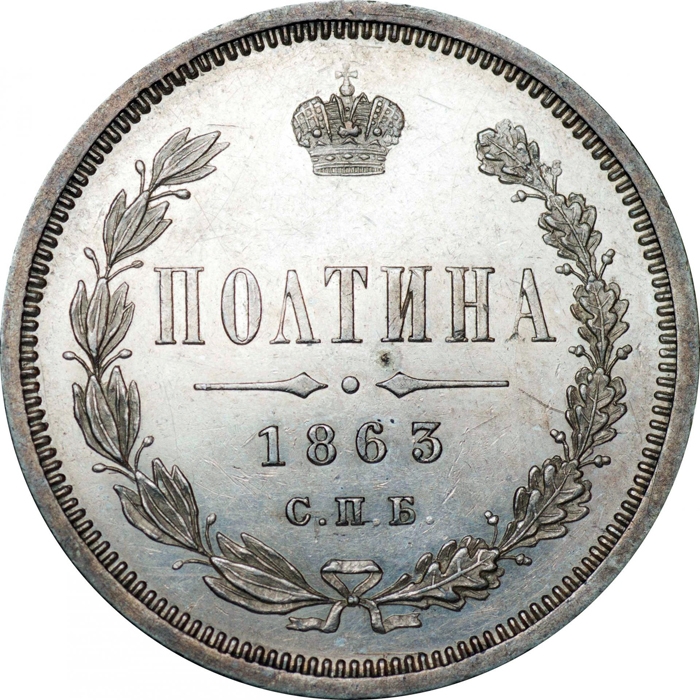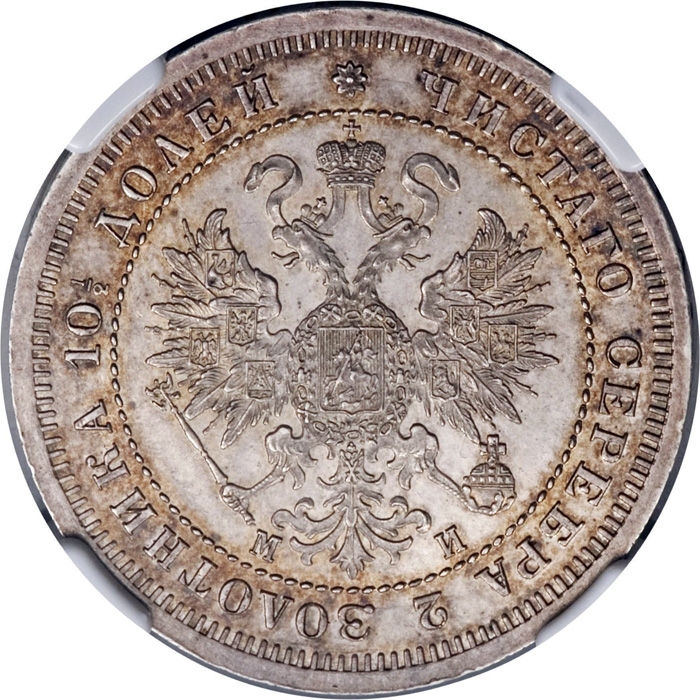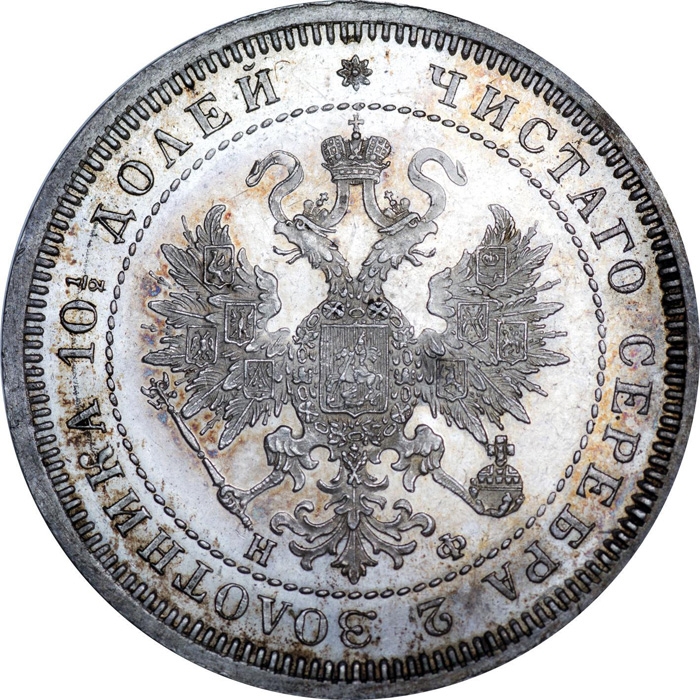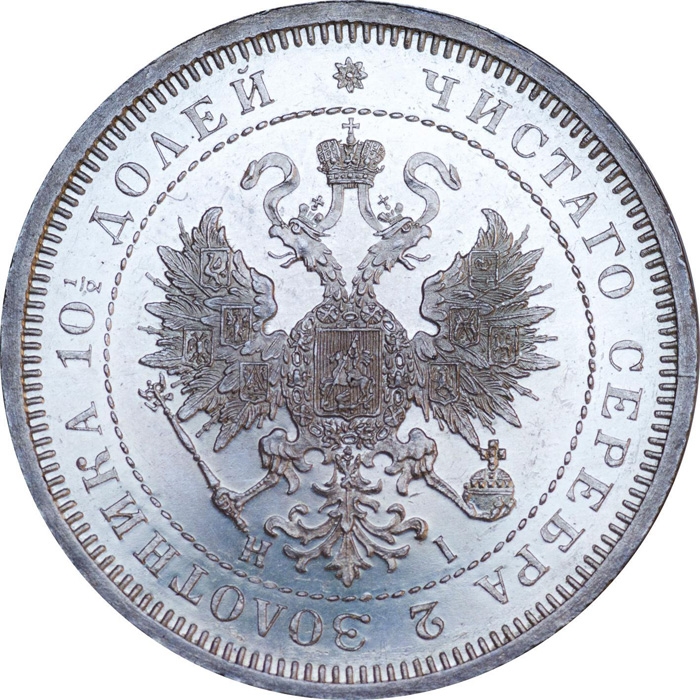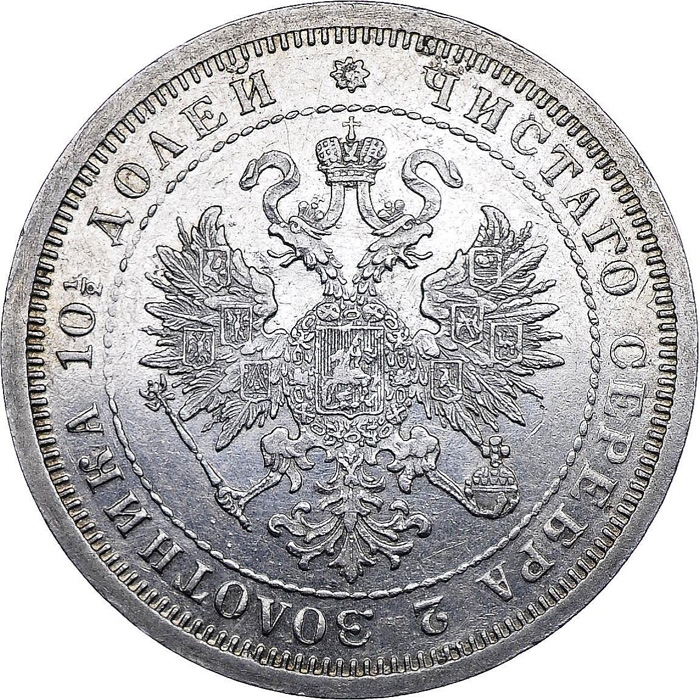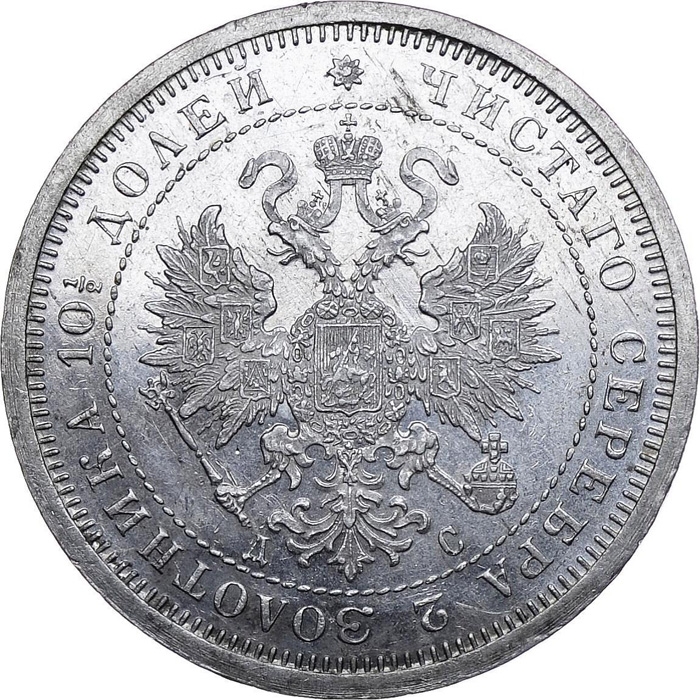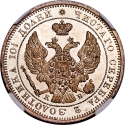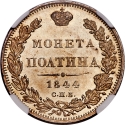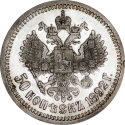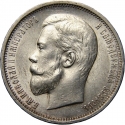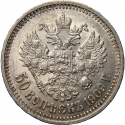You are about to finish your registration. Please check your mailbox (including spam folder). There should be a letter with a confirmation link. Check setting to make sure that your e-mail address is correct.
Send letter againDescription
In the 18th, 19th and 20th centuries 50 Kopecks had individual names Poltina or Poltinnik.
Variations:
- 1859, reverse: bigger and smaller crown
- 1860, 1873-77, obverse: bigger and smaller eagle
This coin has been unchanged during the reigns of the following Russian Emperors:
Alexander II (1818-1881) was the Emperor of Russia from 1855 until his assassination in 1881. He was also the King of Poland and the Grand Duke of Finland. Alexander was the most successful Russian reformer since Peter the Great. His most important achievement was the emancipation of serfs in 1861, for which he became known as Alexander the Liberator. In foreign policy, Alexander sold Alaska to the United States in 1867. Among his greatest domestic challenges was an uprising in Poland in 1863, to which he responded by stripping that land of its separate Constitution and incorporating it directly into Russia.
Alexander III (1845-1894) was the penultimate Emperor of Russia, King of Poland, and Grand Duke of Finland from 1881 until his death in 1894. He was highly conservative and reversed some of the liberal reforms of his father, Alexander II. During Alexander's reign Russia fought no major wars, for which he was styled "The Peacemaker". More than six feet tall (about 1.9 m), he was also noted for his immense physical strength.
Obverse

|
Displays the Lesser Coat of Arms of the Russian Empire - a two-headed eagle crowned with two imperial crowns, over which the same third crown, enlarged, with two flying ends of the ribbon of the Order of Saint Andrew. The State Eagle held a scepter and globus cruciger. On the chest of the eagle there was an escutcheon with the arms of Moscow, depicting Saint George, mounted and defeating the dragon. The Lesser Coat of Arms depicts the imperial double-headed eagle with the addition of the collar of the Order of Saint Andrew around the escutcheon of St. George, and the Arms of Astrakhan, Siberia, Georgia, Finland, Kiev-Vladimir-Novgorod, Taurica, Poland and Kazan on the wings (seen clockwise). ЧИСТАГО СЕРЕБРА 2 ЗОЛОТНИКА 10 ½ ДОЛЕЙ |
|---|---|
Reverse

|
Denomination POLTINA in the center, date and the mint mark below. Wreath of laurel (victory) and oak (strength) around. Russian imperial crowns on the top. ПОЛТИНА |
| Edge |
Silver • Fineness 83 1/3 2 zolotniks • 41 7/25 parts CEP • 83 1/3 ПРОБЫ 2 ЗОЛ • 41 7/25 ДOЛ. |
